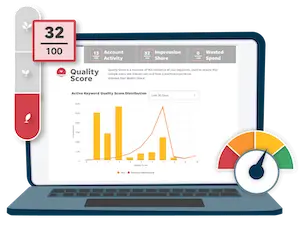A lot gets written about topic clusters when it comes to SEO-focused content in ecommerce or B2B, but much less so when it comes to local SEO.
Do locally focused businesses even need to think about topic clusters? What types of clusters could you build for a roofing company or plumbing company?
While internal linking and site structure is different for local SEO, it’s still critically important.
In this article, I’ll walk through the key types of topic clusters you should be thinking about for local SEO and how to implement and interlink them.
Contents
- What are topic clusters?
- Benefits of topic clusters for local SEO
- Types of topic clusters for local SEO (+examples and tips)
- Key takeaways for creating topic clusters
What are topic clusters?
Topic clusters are related pages that are interlinked, typically for SEO benefit.
More specifically, topic clusters have a “hub and spoke” set up with a hub or pillar page and spoke or cluster pages. Here is a visual representation of the basic concept:

Typically, as part of your topic clusters strategy, you’ll want:
- The hub/pillar page to link to all of the spoke/cluster pages.
- The spoke/cluster pages to all link back up to the pillar page.
- The spoke/cluster pages to link to and have links from at least two spoke/cluster pages.
Now that you know what topic clusters are, let’s talk about how they can benefit your local SEO strategy.
🚀 Free guide >> 10 Tangible & Free Ways to Get on the First Page of Google
Why create topic clusters? What are the benefits?
Creating topic clusters for local SEO has a few core benefits.
Increases your chances for ranking in search results
When you build a topic cluster around a core topic and page you increase the likelihood that the core page will rank. For instance, if you created a series of pages about Orlando roofing costs, Orlando roofing materials, related services, and surrounding towns and had all of those pages link back to your Orlando roofing page, that page will perform better for terms like “Orlando roofing” because you’re indicating to Google that your site is a comprehensive resource on the subject, and those pages can all convey to Google that the Orlando roofing page is about that topic (more on this later).
Attracts more potential local customers
Additionally, you can attract more potential customers by creating specific content related to a core topic that you wouldn’t have otherwise. Often those searchers are higher intent as well because their search terms are more specific, and the terms are within a cluster of terms that are relevant to your business.
Improves the user experience
Finally, creating content clusters and interlinking them strategically improves the user experience for your site’s visitors as you are able to answer more of their related questions (by covering the topic more thoroughly) and giving them the option to dive deeper on a core topic by offering links to related content.
When implemented correctly, all of this leads to more traffic, leads, and revenue from local SEO.
🛑 Search ads can also help you attract more local searchers. Want to learn more about search engine marketing on Google? Get the free guide >> PPC 101: Complete Guide to Google Ads
Types of topic clusters for local SEO (+examples)
The concept of topic clusters is relatively simple, but if you’re a locally focused business, what types of pages should you be “clustering” and how should you fit those pages into clusters? Let’s walk through some examples of topic clusters in local SEO.
Service and area topic clusters
If you’re providing any type of local service—from roofers to chiropractors—you’ll want to build out local service pages targeting your service areas with town page + service. If you offer one service to a tight geography, this may be pretty straightforward with a structure like:
Service Areas
- Windemere roofing
- Winter Garden roofing
- College Park roofing
- Lake Nona roofing
- Oviedo roofing

If you have a larger service area, you can cluster pages by geography, with batches of 10 or so towns.
What if you have a situation like the image above where there are several services across multiple service areas?
First, you need to determine how many pages you actually need. Unfortunately, to do this, you need to do some leg work and look at the actual search results in your area. Let’s look at a few of the services offered in this region by the company above. First, roofing company:
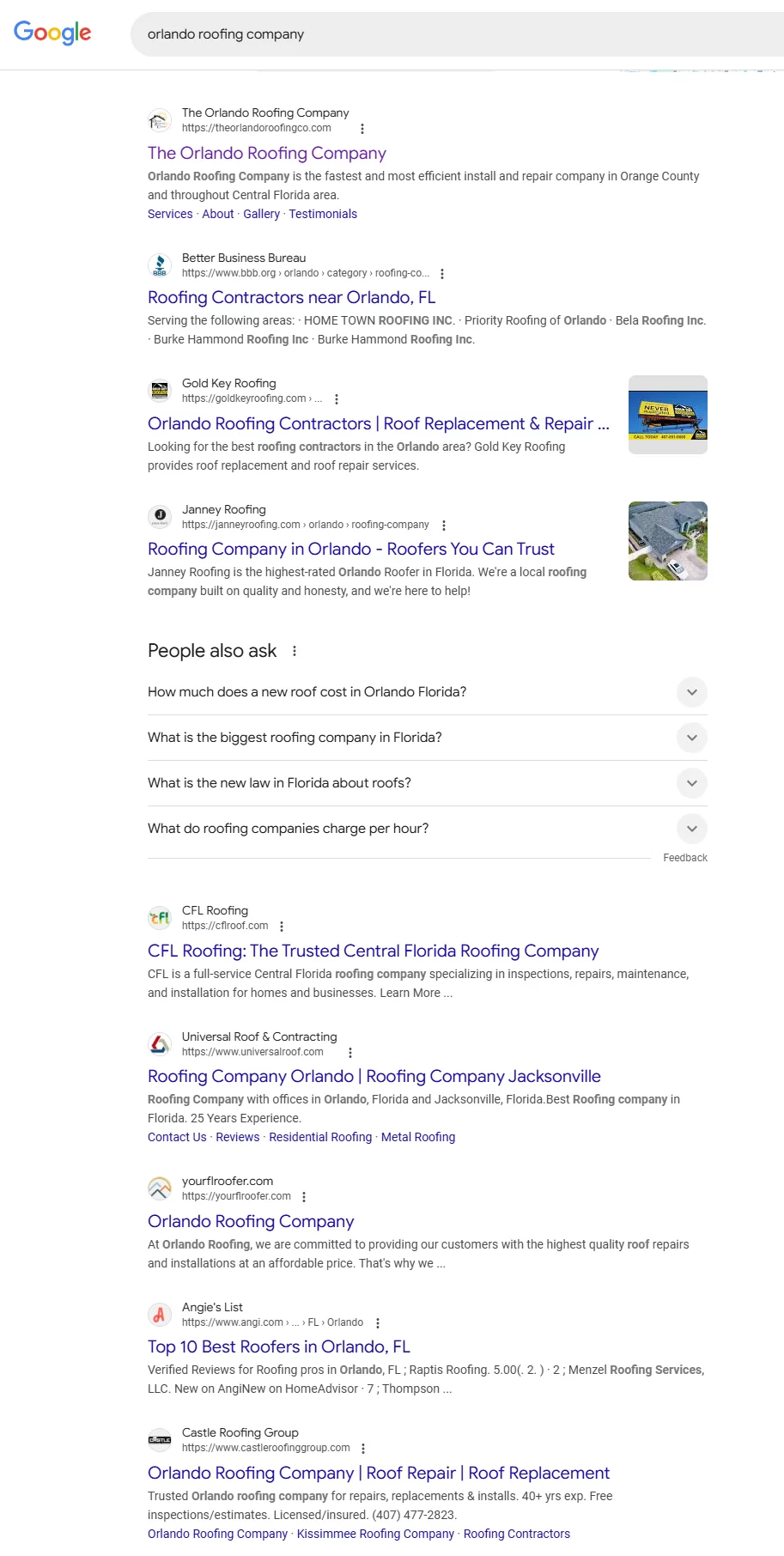
And here is the SERP for Orlando leak detection:

All of these results are service pages or entire sites specifically dedicated to leak detection, so if we want to rank, we’ll need to create a new services page (and not just a sub-section on our roofing page).
On the other hand, if you look at “roof repair Orlando” the results aren’t exactly the same as “Orlando roofing company,” but there are a number of the same sites, and virtually every page is a general roofing page (not specific to repairs):

So that term can likely be addressed on the roofing page.
For sites that have a mix of multiple services and multiple service areas, the structure might look something like this:
Service Areas
- Windemere roofing
- Windemere roof leak detection
- Windemere commercial roofing
- Windemere tile roof repair
- Windemere solar panels
- Winter Garden roofing
- Winter Garden roof leak detection
- Winter Garden commercial roofing
- Winter Garden tile roof repair
- Winter Garden solar panels
- College Park roofing
- College Park roof leak detection
- College Park commercial roofing
- College Park tile roof repair
- College Park solar panels
- Lake Nona roofing
- Lake Nona roof leak detection
- Lake Nona commercial roofing
- Lake Nona tile roof repair
- Lake Nona solar panels
- Oviedo roofing
- Oviedo roof leak detection
- Oviedo commercial roofing
- Oviedo tile roof repair
- Oviedo solar panels
So the Windemere roofing page would link down to its “spoke” pages, those pages would link back up and across to each other, and the Windemere page would have at least two links to and from the other location roofing “spoke” pages.
What to keep in mind when creating this type of topic cluster
- Make sure that your most important services and most important service areas are covered (look at the SERPs to determine if you need a new page).
- Structure content in hub-and-spoke format with the main service pages linking to location-specific pages.
- Ensure each location page links back to the main service page and at least two other location pages.
- Group locations geographically when dealing with large service areas.
🔎 Need help finding the right keywords for your topic clusters? Try our Free Keyword Tool!
Cost and cost calculator topic clusters
Many services will have search volume around town/city + service + cost as well:
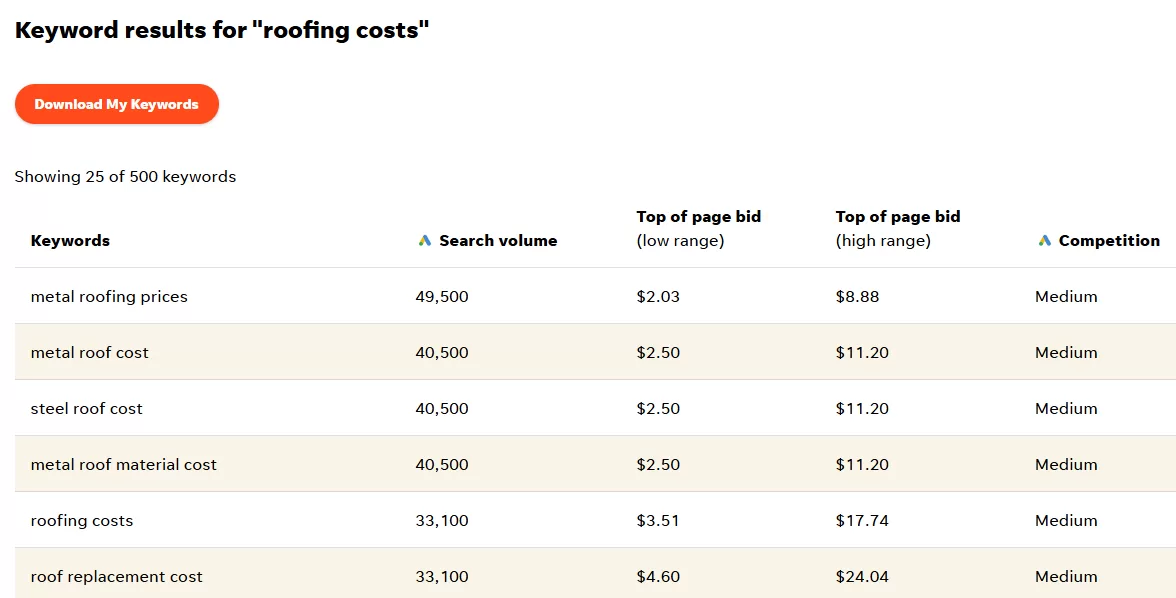
These are national results from the Free Keyword Tool but many of these modifiers will show up for localized searches.
Cost pages—particularly if you can invest in building simple cost calculators and in-depth data for specific areas—can also get passive links from other sources as well.
These can be linked to and from both within service + service area pages, and a broader “{service} costs” or “state {service} costs” page that acts as a hub page and links down to the service area pages.
Tips for creating this type of topic cluster:
- Create area-specific cost pages for services with significant search volume.
- Develop interactive calculators to provide value and attract links.
- Link cost pages to relevant service area pages.
- Consider building a state-level cost hub page if you’re building out a cluster of these pages.
Measurement and materials topic clusters
This is a cluster that depends on the service you’re offering, but there are a lot of locally focused services where measurements and material estimates play a role. A potential customer may want to estimate things like:
- The size of a roof, room, exterior of their house, etc. to help them understand the price of a service.
- The amount of materials (shingles, exterior lights, floor panels, etc.) they’ll need for their specific job.
Providing tools and frameworks for customers to conduct these estimations can help build credibility and authority around a topic. Plus, if you build something like a free tool for your visitors, you can get links from other sites to help with your ranking as well.
Frequency and maintenance topic clusters
If you have a recurring service, there are likely a lot of questions like:
- How often do I need to replace my windows?
- How often should a cleaner come?
- How often do you need to {perform specific maintenance activity}?
As with measurement terms, you want to get in front of these customers as they’re researching whether they need something replaced or how often they need a recurring service:
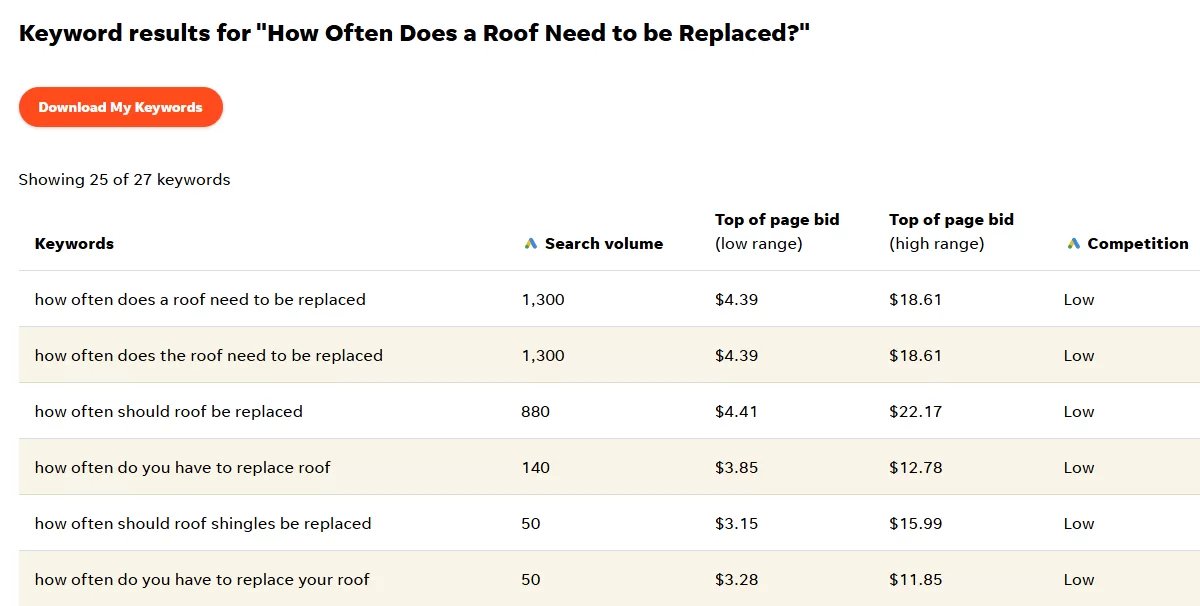
An underrated fact here is that these queries are often personalized based on location. You may think a search query like this will reach everyone across the country—and if you rank well for the term it may—but Google will also personalize these results based on search history and location. Here is the search result for this phrase according to keyword tools:

This is the result I see in Massachusetts:

The Nova Home Improvement site doesn’t show up at all in the generalized search results, but for a local searcher, it’s getting a featured snippet! Again this is a great opportunity to get in front of your potential customers.
The fundamental structure of these kinds of clusters would be the same–you don’t need to build a separate page for each service area you have, just a cluster of related terms around replacement, maintenance, and frequency terms with the same hub and spoke approach.
Tips for creating these topic clusters
- Focus on location-specific maintenance schedules and requirements.
- Include tools for measuring materials and estimating project scope.
- Create content addressing “frequency of {service}” questions.
- Link maintenance content to relevant service pages.
Informational and blog topic clusters
Not every local site needs a lot of informational content. If you’re servicing an area that’s low competition, and/or you offer a service that’s lower competition, you may want to focus on local SEO best practices like building local citations, links, and service area pages rather than informational content.
But the screenshot in the section above gives you an indication of how informational content helps you reach prospects. You can then remarket to those folks, have them see your organic results or ads, and get more business down the line from these activities. More informational content also has a couple of additional advantages for local businesses:
- Topical authority: Building out “how to” content (e.g., if you’re a cleaning business, a series of posts about how to clean various surfaces, rooms in the house, etc.) helps indicate to Google that your site is an authority on a topic. If you can localize this content, that’s even better as it indicates to Google that you’re an authority on both the topic and the area you service.
- Passive links: If you start to rank for informational terms, you often get people doing research through Google who will then link to your resource. Those links are extremely valuable for improving the authority of your site and having it rank better for queries in Google.
Again, these could be on a variety of topics, using the same hub and spoke model with the same linking recommendations outlined above. Some examples of informational content that could work for your locally focused site include:
- How to: How to perform specific maintenance tasks, DIY certain aspects of your service, etc. For a window replacement company, this may be tips for winterizing your windows or maintaining them (again particularly if those tips are specific to your service region).
- Best tools/products: For a salon, this may be hair care products, for someone offering golf lessons the best equipment for a variety of different golf-related tasks, etc.
- Pain points/FAQs: Answering specific questions or pain points your customers may have is another great way to build informational topical clusters. If you’re a dentist, you can create a series of posts answering questions related to teeth whitening that people may be searching for.
Tips for creating these types of topic clusters
- Create how-to content specific to your service area.
- Develop best tools and product recommendations.
- Address common customer pain points and FAQs.
- Focus on locally relevant topics that build authority.
Competitor comparison topic clusters
A lot of businesses don’t want to talk about competitors, but it’s often the case that your prospects already know about your competitors, and being willing to mention them can be a way to get in front of more potential customers who are close to paying for your service.
Just as with Google Ads “conquesting” campaigns that target competitor names, you can potentially rank for some search terms related to your competitors by being willing to mention them and highlight where you’re different.
First, you can create a list of the businesses in your area. Again: this is a bit scary and something a lot of businesses want to stay away from, but it can be a great way to rank for terms that you couldn’t otherwise. When a searcher looks for “roofing companies in Nashville” they want a list, not just the site of a specific company.
This organic result is mostly third-party sites like Yelp or the BBB, but the third organic result here is an individual roofing company that was willing to list competitors:
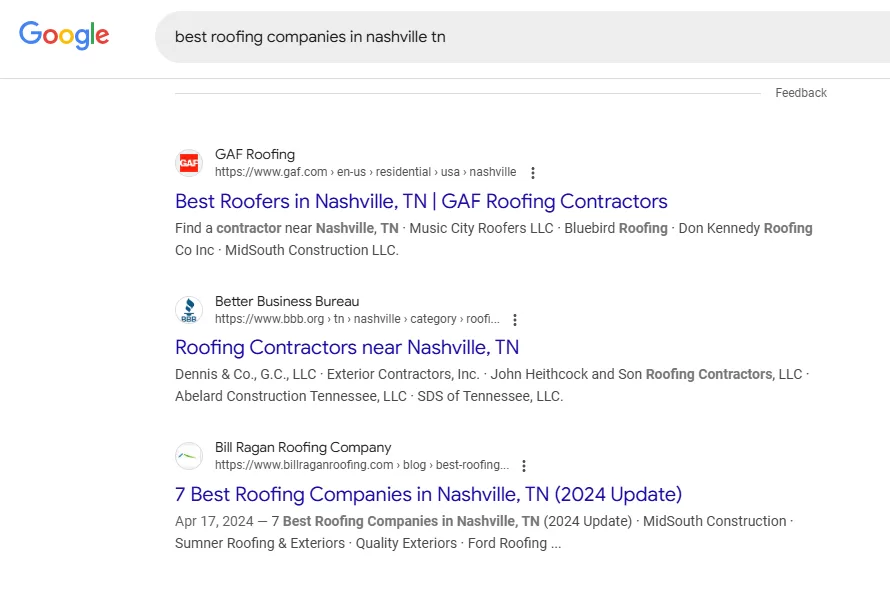
From there, you could go a step further and actually link to a page with your competitor’s name, and do a comparison of what your strengths are versus the competitor. Obviously, you have to be careful not to say anything false or libelous about the competitor, but you can often rank well with these pages for search terms like:
- Competitor name + competitors
- Competitor name + alternatives
- Competitor name + reviews
- Competitor name + costs
- Competitor name + pricing
This is a fairly common practice in other industries but not well used with locally focused businesses.
In terms of structure, you would use the “best of” list as the hub, and the competitor pages would each function as a spoke.
Tips for creating these topic clusters
- Create comprehensive local business listings.
- Develop alternative/comparison pages for major competitors.
- Address competitor-specific searches like reviews and pricing.
- Maintain professional, factual comparisons.
🕵️♀️ Want to know what your competitors are up to? Get the guide >> How to Spy on Your Competitors: 7 Ways to Become a Competitive Supersleuth
How to think about topic clusters for local SEO
Ultimately the most important “topic cluster” for local SEO is making sure that you have coverage around service pages to target your core services and service areas.
If you have additional resources and/or are in a competitive market, a lot of these additional content types and topic clusters can both help you drive incremental traffic and leads and can help solidify your rankings on your core services and service areas.
Here are the key takeaways to keep in mind if you do decide to work on any of these local SEO topic cluster types:
- Implement a hub-and-spoke model with a clear internal linking structure.
- Assess competition levels before investing in informational content.
- Ensure all content serves your target geography and audience.
- Focus on topics directly relevant to your services and local market.
Need help with any part of your SEO strategy? We can help.

